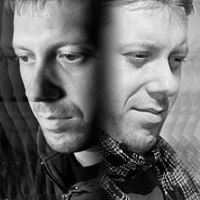Schizophrenia Patients' Brains Denser Than Healthy Patients
Brain networks of schizophrenia patients are denser than healthy subjects, according to research in JAMA Psychiatry.

For patients with severe schizophrenia, brain network activity is different and denser when compared to healthy subjects, according to findings published in JAMA Psychiatry. The study may indicate that schizophrenia is not just one type of brain disorder.
Researchers from the Centre for Addiction and Mental Health in Toronto observed more than 300 patients in order to identify network based biomarkers across the spectrum of impairment present in these patients. The patients were recruited from 3 academic centers between February 1, 2007 and February 28, 2012. There were 128 patients with schizophrenia, 130 matched healthy control patients, and 39 patients with bipolar disorder with 43 matched healthy control subjects. The schizophrenic patients were further classified into either deficit schizophrenia or non-deficit schizophrenia groups. All subjects underwent magnetic resonance imaging (MRI) testing.
“Finding ways to help this particular group of people with schizophrenia is a priority as recovery is unlikely, even up to 20 years after the initial diagnosis,” explained senior author Aristotle Voineskos, MD, in a press release. “Social isolation, lack of work and relationships, and chronic disability are very common.”
The researchers determined through network density analyses that patients with deficit schizophrenia had stronger frontoparietal and frontotemporal coupling compared to patients with non-deficit schizophrenia. Deficit schizophrenia patients also demonstrated greater network density compared to healthy control subjects. Compared to control groups, participants with non-deficit schizophrenia and bipolar disorder did not display significant differences in network density, the researchers added.
“We found alterations in a number of relationships between brain regions among those with more severe schizophrenia compared with the other groups, including those with less severe schizophrenia,” continued Voineskos. “This provides strong evidence that schizophrenia is not just one brain disorder.”
The investigators explained that the deficit schizophrenia patients had networks formed with increased connection density relative to the non-deficit schizophrenia and healthy control subjects.
“High centrality nodes were identified in the supramarginal, middle, and superior temporal and inferior frontal regions in deficit schizophrenia networks based on ranking of 4 centrality metrics,” the authors wrote. “High centrality regions were identified as those that ranked in the top 10 in 50% or more of the thresholded networks in 3 or more of the centrality measures. Network properties were similar in patients with deficit schizophrenia from both study sites.”
These findings are important, offered to the researchers, because they offer insight into the brain processes of schizophrenia patients and the negative symptoms and social function that they experience. Brain circuits can be zeroed in on, they believe, to create new therapeutic approaches to aid negative symptoms and social impairment.